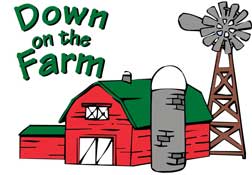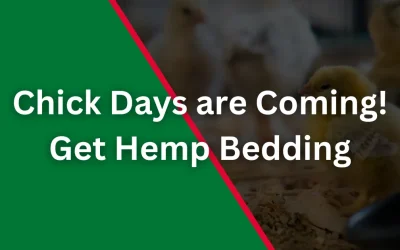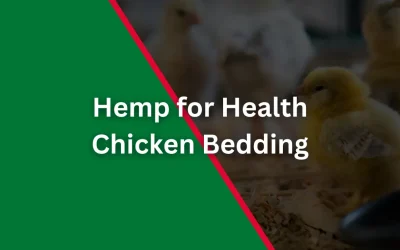In the highly competitive world of poultry farming, innovation is key, and hemp bedding is causing quite the stir. Picture this: An eco-friendly, cost-effective, and game-changing solution that is revolutionizing the poultry industry. Enter hemp bedding. This natural and sustainable alternative is swiftly replacing traditional options, offering a host of benefits for both farmers and feathered residents alike. As farmers increasingly prioritize sustainability and animal welfare, hemp bedding emerges as a frontrunner, transforming the landscape of poultry farming.
With its exceptional absorbency, antimicrobial properties, and reduced odor, hemp bedding not only enhances living conditions for poultry but also streamlines maintenance efforts for farmers. The undeniable allure of hemp’s eco-friendly profile makes this innovation a win-win for both profitability and environmental consciousness in the poultry industry. Join us as we delve into the impactful shift towards hemp bedding and how it’s rewriting the rules of poultry farming as we know it.
The traditional challenges of poultry farming
Poultry farming has long been plagued by challenges, from maintaining optimal living conditions for the birds to managing costs and ensuring sustainability. Traditional bedding materials such as straw, wood shavings, and hay have been the go-to choices for farmers, but they come with their own set of drawbacks. These materials often lack sufficient absorbency, leading to moisture buildup and unpleasant odors. Additionally, they can harbor harmful bacteria and fungi, posing health risks to the poultry and creating additional work for farmers in terms of cleaning and maintenance.
Amidst these challenges, the poultry industry has been ripe for a breakthrough innovation that can address the shortcomings of traditional bedding materials while aligning with the growing emphasis on sustainability and animal welfare. This is where hemp bedding enters the scene, poised to revolutionize the way poultry farming is approached and executed.
For decades, poultry farmers have been seeking a bedding solution that not only ensures the comfort and well-being of their birds but also simplifies the ongoing maintenance and cleaning processes. Hemp bedding is emerging as the answer to these long-standing challenges, offering a range of benefits that are reshaping the poultry farming landscape.
Introducing hemp bedding for poultry farming
Hemp bedding, derived from the fibrous stalks of the hemp plant, has garnered significant attention for its remarkable properties that make it an ideal choice for poultry farming. Its exceptional absorbency, antimicrobial nature, and reduced odor make it a compelling alternative to traditional bedding materials. Hemp’s absorbency is particularly noteworthy, as it effectively wicks away moisture, keeping the poultry living environment drier and more comfortable. This not only promotes better health and well-being for the birds but also minimizes the risk of bacterial and fungal growth.
Furthermore, hemp bedding boasts natural antimicrobial properties, reducing the likelihood of harmful pathogens thriving within the poultry housing. This contributes to a healthier and safer environment for the birds, aligning with the increasing focus on animal welfare within the industry. Additionally, hemp bedding significantly mitigates odor, creating a more pleasant and hygienic atmosphere within the poultry housing, much to the satisfaction of both the birds and the farmers.
As hemp bedding gains traction as a superior bedding solution for poultry farming, its introduction marks a pivotal shift in the industry’s approach to addressing the fundamental needs of poultry while embracing sustainable and eco-friendly practices.
Hemp bedding vs. traditional bedding materials
Comparing hemp bedding to traditional bedding materials underscores the notable advantages that hemp brings to the table, positioning it as a transformative choice for poultry farming. Unlike straw, wood shavings, and hay, hemp bedding excels in its absorbency, effectively managing moisture levels and preventing the accumulation of harmful bacteria and fungi. This sets it apart as a superior option for maintaining optimal living conditions for poultry, with a direct impact on their health and well-being.
The natural antimicrobial properties of hemp bedding further distinguish it from traditional materials, as it actively works to inhibit the proliferation of pathogens, creating a healthier and safer environment for the birds. In contrast, traditional bedding materials may pose a greater risk of harboring harmful microorganisms, necessitating more intensive cleaning and maintenance efforts to mitigate potential health hazards.
Additionally, the reduced odor associated with hemp bedding presents a stark contrast to the challenges posed by traditional materials, offering a more hygienic and pleasant living environment for both the birds and the farmers. This aspect of hemp bedding significantly improves the overall experience of managing poultry housing, addressing a long-standing concern in the industry.
The cost-effectiveness of hemp bedding further solidifies its advantage over traditional materials, as its extended lifespan and minimal maintenance requirements contribute to long-term savings for poultry farmers. When weighing the performance, health benefits, and economic considerations, hemp bedding emerges as a clear frontrunner in revolutionizing the approach to poultry farming bedding materials.
Hemp bedding as an eco-friendly solution
Amidst the growing emphasis on sustainability and eco-conscious practices, hemp bedding shines as a beacon of environmental responsibility within the poultry industry. Derived from the hemp plant, which is known for its rapid growth and minimal need for pesticides and herbicides, hemp bedding presents a natural and renewable alternative to traditional bedding materials. This aligns with the industry’s increasing focus on reducing environmental impact and embracing sustainable solutions that benefit both the poultry and the planet.
Hemp’s exceptional absorbency not only enhances the living conditions for poultry but also minimizes the environmental footprint of poultry farming operations. By effectively managing moisture and reducing the need for frequent bedding replacements, hemp contributes to a reduction in waste and resource consumption, aligning with the broader goals of sustainable agricultural practices.
Furthermore, the cultivation of hemp for bedding purposes offers an opportunity for farmers to diversify their agricultural activities, tapping into the burgeoning market for sustainable and eco-friendly products. This not only presents a potential revenue stream for farmers but also contributes to the broader promotion of hemp as a versatile and sustainable resource within the agricultural sector.
The eco-friendly profile of hemp bedding resonates with consumers and stakeholders alike, reflecting positively on the overall image of poultry farming operations and their commitment to responsible and sustainable practices. As the demand for environmentally conscious products continues to rise, hemp bedding positions poultry farmers at the forefront of the sustainable agriculture movement, setting a new standard for responsible and eco-friendly poultry production.
Implementing hemp bedding in poultry farming
The transition to hemp bedding in poultry farming involves a strategic and informed approach to ensure a seamless integration of this innovative solution. Farmers looking to adopt hemp bedding can begin by conducting thorough research on reputable suppliers and understanding the specific requirements for introducing hemp bedding into their existing poultry housing infrastructure. Engaging with experienced hemp bedding suppliers and seeking guidance on best practices for implementation is essential to achieve optimal results and maximize the benefits of this transformative bedding material.
Assessing the suitability of existing poultry housing for accommodating hemp bedding is a crucial step in the adoption process, as it may necessitate adjustments or modifications to ensure compatibility with the unique properties of hemp bedding. This may include considerations for ventilation, drainage, and overall structural integrity to optimize the performance of hemp bedding and create an ideal living environment for the poultry.
Furthermore, educating farm personnel on the benefits and proper management of hemp bedding is integral to the successful implementation of this innovation. Training programs and informational resources can equip the workforce with the knowledge and skills necessary to effectively maintain and manage poultry housing with hemp bedding, ensuring that the transition is met with enthusiasm and confidence.
Collaborating with industry experts and peers who have successfully integrated hemp bedding into their poultry farming operations can provide valuable insights and practical guidance for farmers embarking on this transformative journey. By leveraging collective knowledge and experiences, farmers can navigate the transition to hemp bedding with greater ease and set the stage for a positive impact on their poultry farming practices.
Success stories of poultry farms using hemp bedding
Poultry farms that have embraced hemp bedding as a revolutionary alternative to traditional materials have witnessed remarkable successes and transformative outcomes in their operations. From enhanced bird welfare to streamlined maintenance and improved overall efficiency, the adoption of hemp bedding has reshaped the way these farms approach poultry farming.
One notable success story comes from a family-owned poultry farm in the heart of the Midwest, where the transition to hemp bedding resulted in significant improvements in bird health and well-being. The farm’s owners noted a marked reduction in respiratory issues among their poultry, attributing this positive change to the superior absorbency and reduced moisture levels facilitated by hemp bedding. This translated to lower veterinary costs and enhanced productivity, positioning the farm for greater profitability and sustainability.
Another poultry farm, located on the outskirts of a bustling urban center, found that the introduction of hemp bedding not only improved the living conditions for their birds but also resonated positively with their customer base. The eco-friendly and sustainable nature of hemp bedding aligned with the farm’s commitment to responsible agricultural practices, garnering praise and support from environmentally conscious consumers. This not only elevated the farm’s brand image but also opened doors to new market opportunities and partnerships within the sustainable agriculture sector.
The success stories of poultry farms transitioning to hemp bedding underscore the tangible benefits and transformative impact that this innovation brings to the industry. From improved bird health to heightened operational efficiency and consumer appeal, hemp bedding has proven to be a game-changer for poultry farms that have embraced its potential.
Hemp bedding suppliers and availability
As the demand for hemp bedding continues to grow within the poultry industry, a diverse range of suppliers and distributors have emerged to meet the needs of farmers seeking to integrate this innovative solution into their poultry farming practices. Reputable hemp bedding suppliers offer a variety of product options, catering to different scales of poultry operations and providing farmers with access to high-quality bedding materials that align with their specific requirements.
From locally sourced suppliers to established national distributors, farmers have a wealth of choices when it comes to procuring hemp bedding for their poultry farming needs. Engaging with suppliers who prioritize sustainable cultivation practices and adhere to stringent quality standards ensures that farmers receive premium hemp bedding that delivers on its promised benefits. This not only fosters confidence in the product’s performance but also contributes to the broader support of responsible and ethical supply chains within the poultry industry.
The availability of hemp bedding extends across regions, with an increasing number of farmers recognizing its value and seeking to implement it within their poultry housing facilities. This growing accessibility reflects the industry’s shift towards embracing sustainable and eco-friendly solutions, with hemp bedding poised to become a staple choice for poultry farmers looking to elevate their practices and prioritize the well-being of their birds.
Overcoming misconceptions about hemp bedding
Despite the compelling advantages of hemp bedding, misconceptions and myths surrounding this innovative solution may impede its widespread adoption within the poultry industry. Addressing these misconceptions is essential in fostering a more informed and receptive attitude towards hemp bedding, empowering farmers to make educated decisions that align with their goals of improving bird welfare, operational efficiency, and sustainability.
One common misconception revolves around the perceived difficulty of transitioning to hemp bedding and integrating it within existing poultry housing setups. In reality, with proper guidance and support from experienced suppliers and industry professionals, the process of implementing hemp bedding can be streamlined and tailored to suit the specific needs of each farm. By dispelling the notion of complexity, farmers can approach the transition with confidence and a clear understanding of the potential benefits.
Another prevalent misconception pertains to the cost implications of adopting hemp bedding, with some farmers apprehensive about potential financial burdens. However, when considering the long-term savings, improved bird health, and reduced maintenance requirements associated with hemp bedding, the initial investment proves to be a strategic and economically sound decision. By addressing the cost-related misconceptions and highlighting the overall value proposition of hemp bedding, farmers can make informed choices that align with their financial and operational objectives.
Furthermore, dispelling myths about hemp bedding’s performance and efficacy can bolster confidence in its ability to surpass traditional bedding materials in delivering superior results for poultry farming. By showcasing real-world examples and success stories, farmers can gain a clearer perspective on the transformative impact that hemp bedding can have on their operations, dispelling doubts and misconceptions that may hinder its adoption.
Conclusion: The future of poultry farming with hemp bedding
As the poultry industry continues to evolve and adapt to changing consumer preferences, regulatory standards, and environmental considerations, the emergence of hemp bedding represents a pivotal shift towards a more sustainable, efficient, and welfare-centric approach to poultry farming. The undeniable allure of hemp’s eco-friendly profile, coupled with its exceptional absorbency, antimicrobial properties, and reduced odor, positions it as a game-changing innovation that is rewriting the rules of poultry farming as we know it.
By embracing hemp bedding, poultry farmers are not only elevating the living conditions and well-being of their birds but also aligning with the broader movement towards responsible and sustainable agricultural practices. The success stories of farms that have adopted hemp bedding serve as compelling testaments to its transformative impact, showcasing tangible improvements in bird health, operational efficiency, and consumer appeal.
Looking ahead, the future of poultry farming with hemp bedding holds promise for continued innovation, collaboration, and positive change within the industry. As more farmers recognize the benefits and potential of hemp bedding, its widespread adoption is poised to reshape the poultry farming landscape, setting new standards for environmental stewardship, animal welfare, and operational excellence. With the momentum behind hemp bedding only gaining traction, the poultry industry stands on the brink of a revolutionary era, driven by the success of poultry farmers.




